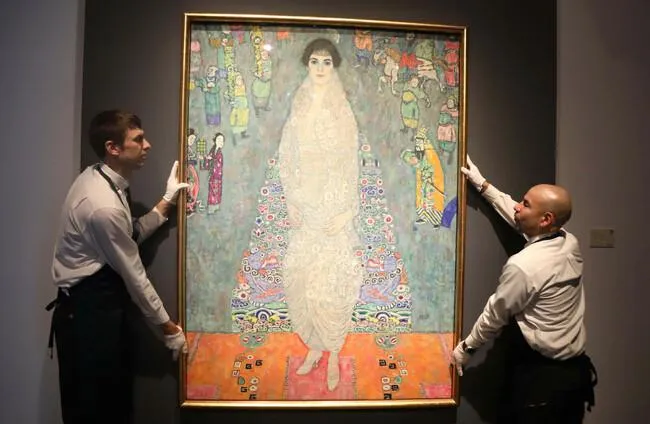Gustav Klimt portrait sells for about R4 billion, breaking modern-art auction records

Gustav Klimt's Portrait of Elisabeth Lederer fetched the highest price for a modern artist this week.
Image: Washington Post/Supplied
A Gustav Klimt portrait made history this week when it sold for an astonishing $236.4 million (around R4 billion) at an auction in New York, becoming the most expensive modern artwork ever sold at auction and the second most expensive painting in history, second only to Da Vinci's “Salvator Mundi” which went for $405m.
A landmark sale
The artwork, Portrait of Elisabeth Lederer, completed between 1914 and 1916, is one of the Austrian artist's rare full-length portraits from the final years of his career.
Painted in opulent whites and golds, it captures Lederer, the daughter of one of Klimt’s prominent Viennese patrons, in a strikingly modern, elongated pose that defined his late style. Lederer was wearing a Chinese kimono in the portrait, typical of art neuveau movement.
The sale unfolded in a tense 20-minute bidding war involving six determined collectors, with the winning bid landing at $205 million before premiums pushed the final price to $236.4 million. The portrait headlined an elite Sotheby’s auction featuring works from the estate of billionaire collector Leonard Lauder. Lauder - the heir to the Estee Lauder fortune - was a major art collector and had acquired the piece in the 1980s. It has been hiden from piublic view until this week.
The record-shattering sale dethroned previous auction benchmarks for 20th-century art, signalling the continued dominance of blue-chip modern masters in a market some believe to be drifting toward contemporary and digital works.
A rare survivor with a dramatic past
Only two full-length Klimt portraits remain in private hands, the other of Adele Bloch Bauer about which the film Lady in Gold was made in 2015, making this painting on auction this week exceptionally scarce.
Much of the Lederer family’s art was seized by the Nazis during World War II. This portrait escaped destruction, adding historical weight to its already significant artistic value.
Elisabeth Lederer’s own story deepens this impact. During the war, she reportedly claimed Klimt as her biological father, a lie that helped shield her from Nazi persecution. That narrative now forms an intrinsic part of the painting’s cultural gravity.
The sale marked one of the most successful evenings in Sotheby’s history and underscored the high-end market’s resilience, even in a volatile global economy.
Feeling flush?
In a twist that captured global attention, another headline-grabbing lot from the same auction was Maurizio Cattelan’s infamous 18-karat gold toilet, America, which sold for over $12 million. It has been reported that the entertainment franchise Ripley's Believe it or Not! acquired the piece.
Cattelan made 2 toilets like this. The other one was stolen and never recovered or heard of again, presumably scrapped and melted.
Earlier this year, two men were jailed for stealing the £4.8m gold toilet from an art exhibition at Blenheim Palace.They had smashed their way in and ripped out the functional 18-carat, solid gold toilet hours after a glamorous launch party at the Oxfordshire stately home in September 2019.The men, from Oxford, were sentenced to four years and two years and three months in prison respectively.
What Klimt’s sale means
Klimt’s record sale highlights several broader shifts:
The power of narrative: Buyers are increasingly drawn to works with layered historical stories and emotional resonance.
Renewed confidence in legacy artists: While contemporary art often dominates headlines, collectors continue to place extraordinary value on canonical modern masters.
The scarcity factor: With so few Klimt portraits left outside museum walls, any that surface instantly become market-defining events.
Related Topics: